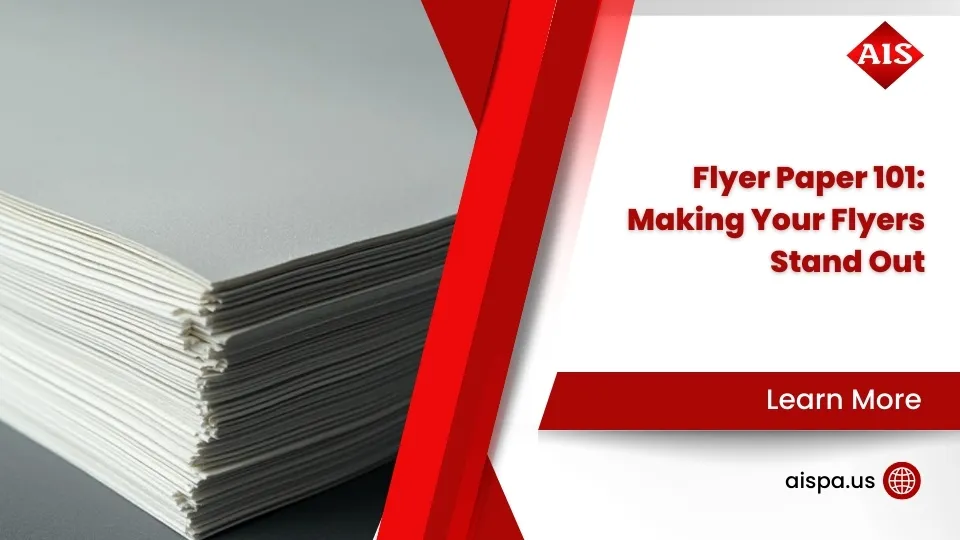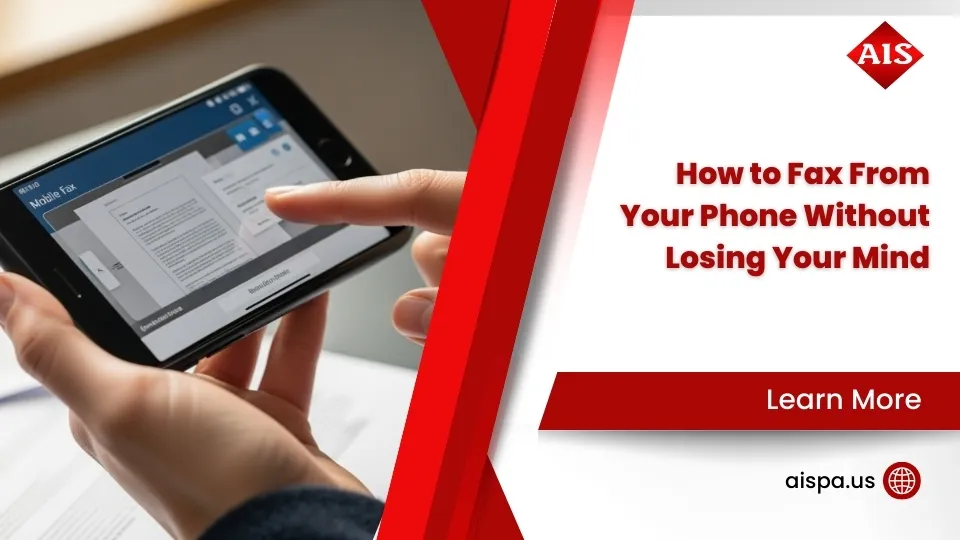Paper Perfection: How to Choose the Best Paper for Certificates
The best paper for certificates creates an immediate impression that speaks volumes before a single word is read. I finded this when helping a local university upgrade their graduation certificates. The difference between standard copy paper and premium certificate stock wasn’t just noticeable—it was transformative.
Here’s a quick reference to help you choose the right paper for your needs:
| Certificate Type | Recommended Paper | Weight | Key Features |
|---|---|---|---|
| Archival/Important | 100% Cotton Rag | 32 lb | Acid-free, longest lifespan (100+ years) |
| Professional | Parchment | 24-32 lb | Classic mottled appearance, good durability |
| Corporate Awards | Linen | 24-32 lb | Textured finish, neat appearance |
| Modern/Creative | Laid or Granite | 24-28 lb | Distinctive texture, contemporary feel |
Think about it—people display their most valued certificates for decades. That college diploma hanging in an office? It might be there for 30+ years. The paper it’s printed on becomes part of the achievement’s legacy.
Standard office paper yellows within just a few years, even in moderate light. The edges curl, and that once-proud achievement starts looking shabby. Meanwhile, a certificate printed on archival-grade cotton paper remains crisp and prestigious for generations.
“Any document worth preserving deserves paper designed to last,” as one of our preservation-minded clients puts it. And they’re absolutely right.
Beyond durability, your paper choice sends subtle signals about value. The weight in someone’s hands, the texture under their fingertips, even the sound it makes when handled—these sensory experiences communicate the significance of the achievement and your organization’s attention to detail.
Whether you’re printing professional certifications, employee recognition awards, or educational diplomas, understanding the right paper for the job ensures your certificates will maintain both their appearance and meaning for years to come.

Selecting the Best Paper for Certificates
Have you ever held a certificate that just felt… important? That wasn’t an accident. When it comes to choosing the best paper type for printing certificates, several key factors make all the difference: durability, appearance, feel, and longevity. At Associated Imaging Solutions, we’ve helped countless Philadelphia businesses create certificates that recipients proudly display for years.
Archival-grade paper is truly the gold standard for certificates meant to last. Unlike the regular copy paper sitting in your office printer right now, archival paper resists yellowing, brittleness, and deterioration. The difference becomes strikingly clear after just a few years—standard paper begins showing its age while archival paper maintains that crisp, fresh appearance.
I remember one client who told me, “I found my grandfather’s college diploma from the 1940s in perfect condition, while my own certificate from just 15 years ago already looks yellow and fragile.” That’s the power of proper paper selection!
The prestige factor matters tremendously. When someone receives a certificate printed on premium stock, they immediately sense its value through multiple senses—the substantial weight in their hands, the distinctive texture against their fingertips, and the visual quality all working together to create an impression of significance and authenticity.
What Makes Certificate Paper “Archival Grade”?
Not all papers claiming to be “certificate quality” truly make the grade. Genuine archival-grade paper possesses specific properties that dramatically extend its lifespan:
Acid-free composition is perhaps the most critical feature. Standard paper contains acids that slowly break down fibers over time, causing that dreaded yellowing and brittleness. In contrast, archival paper maintains a neutral pH (7.0 or slightly higher) that prevents this natural degradation.
Lignin-free processing is another crucial element. Lignin, a natural component in wood pulp, oxidizes when exposed to light and air, causing discoloration. Quality archival papers have this compound carefully removed during manufacturing.
Many of our clients look for ISO 9706 certification, which officially certifies that paper meets international permanence requirements for documents meant to last. Papers that earn this designation have undergone permanence testing—a process that simulates accelerated aging to ensure longevity.
According to archivists we’ve consulted, documents printed on properly made acid-free, lignin-free paper can last 100+ years without significant degradation when properly stored. One preservation specialist put it simply: “Not all heavier-stock or parchment-look papers are archival quality; always look specifically for acid-free, cotton rag content.” This distinction makes all the difference for certificates meant to last generations.
The Role of 100% Cotton Rag in Prestige
If archival paper is the gold standard, then 100% cotton rag paper is the platinum level of certificate papers. Originally made from cotton rags (hence the name), modern cotton rag paper comes from cotton linters or first-cut cotton fibers.
The benefits of using cotton rag paper for your certificates are impressive:
Cotton provides exceptional durability that simply can’t be matched by wood-pulp papers. The cotton fibers are significantly stronger, resulting in paper that resists tearing and maintains its structural integrity decade after decade.
Your printed text and graphics will look better too, thanks to superior ink absorption. The natural cotton fibers create a surface that accepts ink beautifully, allowing for crisp text and vibrant colors without bleeding or feathering—essential for certificates that feature detailed borders or logos.
There’s also that unmistakable tactile quality that makes cotton paper special. The soft yet substantial feel communicates luxury and importance immediately upon handling. As one client told us, “Our employees actually commented on how different these certificates felt compared to our previous ones.”
Perhaps best of all, cotton is naturally acid-free, making it inherently archival-quality without requiring chemical treatments. When Philadelphia organizations ask us about the best paper type for printing certificates for their most prestigious awards, we often recommend 100% cotton for this very reason.
A document preservation expert we work with summed it up perfectly: “Switching to acid-free cotton paper was a no-brainer to ensure future generations can access these important records.” This perspective highlights why thinking long-term matters when selecting certificate paper—what you’re creating today might become someone’s treasured keepsake or even a historical document tomorrow.
Comparing Popular Certificate Paper Textures & Stocks
Beyond composition, the texture and stock type significantly impact a certificate’s appearance and feel. Let’s explore the most popular options:

Linen vs Parchment: Visual & Tactile Showdown
Linen and parchment papers are like the classic rivals of the certificate world – both beloved, but each with their own distinct personality and charm.
Linen Paper feels like running your fingers over fine fabric. It features a subtle crosshatch texture that catches the light beautifully, giving certificates a sophisticated, professional appearance. When I hand clients a linen certificate, they often comment on how substantial it feels. The embossed texture provides excellent ink adhesion, resulting in crisp text and vivid images that really pop on the page.
“Linen paper has a subtle, embossed texture that looks expensive and eye-catching,” one of our paper suppliers mentioned during a recent visit to our Philadelphia office. This texture isn’t just for show – it adds a refined quality that instantly lifts the certificate’s prestige.
Parchment Paper, on the other hand, takes us back in time. With its slightly mottled, translucent appearance reminiscent of traditional animal skin parchment, it practically whispers “official document” as soon as you see it. Available in cream, ivory, and white tones, parchment creates that classic, timeless aesthetic that many organizations prefer for their most important certificates.
I’ve found that parchment works beautifully with virtually any printing method – from modern digital printers to traditional calligraphy. As one industry report noted, “Parchment paper is the most picked paper for printing certificates due to its thick, resilient, and hardy nature.”
When helping our clients choose between these two classics, I often ask about their organization’s personality. Linen tends to convey a more modern, corporate elegance, while parchment evokes tradition and timelessness. Both make excellent choices for the best paper type for printing certificates – it really comes down to the impression you want to create.
Laid & Granite Papers for Modern Designs
For organizations looking to break from tradition while maintaining professionalism, laid and granite papers offer distinctive alternatives that make certificates stand out.
Laid Paper feels special the moment you touch it. The pattern of parallel lines with perpendicular chain lines creates a handcrafted texture that reminds me of artisanal paper from centuries past. I’ve noticed creative industries and arts organizations particularly gravitate toward laid paper for their certificates. It offers recipients a unique tactile experience that feels both historic and artistically modern.
Granite Paper brings a subtle sophistication with its tiny flecks creating a stone-like, speckled appearance. The first time I showed granite paper to a corporate client, they were immediately drawn to how it conveyed solidity and permanence without being flashy. “Granite paper gives a visually heavier look, ideal for high-impact documents,” as one of our paper experts explained during a training session. This weightiness makes it particularly suitable for significant corporate recognition or professional certifications.
When helping our Philadelphia clients select the best paper type for printing certificates, we also discuss whether text stock or cover stock would better suit their needs. Here’s how they compare:
| Feature | Text Stock | Cover Stock |
|---|---|---|
| Weight | Lighter (20-32 lb) | Heavier (65-110 lb) |
| Flexibility | More flexible | Stiffer, card-like |
| Best for | Certificates to be framed | Certificates to be handled |
| Security features | Accepts watermarks | More difficult to alter |
| Embossing capability | Excellent | Limited |
Many of our clients at Associated Imaging Solutions don’t realize how much paper choice affects perception until they see and feel the options side by side. When someone receives a certificate on premium stock with the perfect texture, they immediately sense its value – and by extension, the value of their achievement and your organization.
Paper Weight, Thickness & Feel: Finding the Sweet Spot
Paper weight is one of those things you might not think about until you hold a flimsy certificate in your hands. It’s amazing how quickly we form impressions based on weight alone – too light feels cheap, too heavy can seem overdone.

Here in the U.S., we measure paper weight in pounds, representing how much 500 sheets weigh in the paper’s basic size. For text papers, that’s usually 25″ × 38″, while cover stocks use 20″ × 26″. If you’re working with international partners, you’ll see measurements in grams per square meter (gsm) instead.
For certificates that make the right impression, we’ve found the sweet spot typically falls between 24 lb (90 gsm) and 80 lb (216 gsm):
- 24-28 lb (90-105 gsm) works well for certificates heading straight into frames or less formal recognitions
- 32 lb (120 gsm) hits that perfect balance of quality feel and printer-friendliness for most certificates
- 65-80 lb (176-216 gsm) delivers that premium weight that says “this achievement matters” – perfect for prestigious awards
As one paper specialist told me, “For formal certificates and diplomas, 80 lb paper offers the quality feel and supports embossing and raised seals.” That extra weight provides substantial heft while still working with most printing systems.
Text Paper vs Cover Stock Explained
When hunting for the best paper type for printing certificates, you’ll need to decide between text paper and cover stock. This choice affects more than just weight – it impacts how your certificates handle and feel.
Text Paper is the more flexible option. It’s lighter but still substantial, typically ranging from 24-32 lb (90-120 gsm). This flexibility makes it easier to feed through printers and perfect for embossing or watermarking. If your certificates will be framed or need security features, text paper is your friend.
Cover Stock is the heavyweight champion. Similar to lightweight cardstock, it provides maximum durability and an impressive feel in hand. Typically ranging from 65-110 lb (176-300 gsm), it’s ideal for certificates that will be handled frequently or displayed without frames.
I love how one paper expert put it: “Use cover stock for gifting certificates because of its stiffness; choose text paper for awards if you need embossing or watermark security features.”
This distinction matters especially for printing. Most home and office printers have limits on paper weight – typically handling up to 80-100 lb paper. Heavier stocks often require professional equipment, which is where our team at Associated Imaging Solutions can help.
Why 32-lb 100% Cotton Is the Sweet Spot
After helping countless Philadelphia businesses with their certificate needs, we’ve noticed 32-lb (120 gsm) 100% cotton paper emerges as the Goldilocks choice – not too light, not too heavy, but just right.
There’s something special about this weight and material combination. It feels substantial in your hands without being bulky. The cotton fibers create a soft yet strong sheet that resists tearing and maintains its structure beautifully. Since cotton is naturally acid-free, these certificates can last for generations without yellowing or becoming brittle.
From a practical standpoint, 32-lb cotton accepts ink beautifully, creating crisp text and vibrant colors without bleeding. It runs smoothly through most quality printers without jams or feeding issues. And it strikes that perfect balance between flexibility and substance that gives certificates their professional feel.
As a historian with archive experience once told me, “100% cotton, 32-lb archival paper is recommended by historians and archivists for certificates intended to last for generations, as it is acid-free and highly durable.”
We’ve helped many Philadelphia organizations – from universities to corporations – find this perfect balance between quality, printability, and longevity. Time after time, 32-lb cotton delivers results that make both the issuer and recipient proud of the achievement it represents.
Longevity, Preservation & Security Considerations
Your certificate is more than just a piece of paper—it’s a lasting symbol of achievement that deserves to stand the test of time. After helping countless Philadelphia businesses create meaningful certificates, we’ve learned that choosing the best paper type for printing certificates is just the beginning of ensuring their longevity.

Climate & Storage Best Practices
I once had a client who framed their hard-earned professional certification and proudly displayed it by a sunny window. Six months later, they were dismayed to find it had yellowed dramatically. This common mistake is easily avoided with proper storage practices.
“Think of your certificate like a fine wine—it needs the right conditions to age gracefully,” as one preservation expert told me. The ideal environment keeps temperature between 65-70°F and humidity between 30-50%. These conditions prevent the paper from expanding, contracting, and developing mold growth that can permanently damage your documents.
Sunlight is particularly harmful—even indirect exposure can cause fading and yellowing over time. If you’re framing your certificate (as many recipients do), invest in UV-filtering glass or acrylic. This small upgrade makes a world of difference in preserving colors and preventing deterioration.
For certificates not on display, flat storage in acid-free folders or sleeves is your best bet. The acid-free part is crucial—regular folders can actually transfer acids to your certificate, accelerating deterioration. Some of our clients even use silica gel packets in storage containers to control humidity, especially in Philadelphia’s sometimes muggy climate.
When it comes to framing, the mounting materials matter just as much as the glass. Choose acid-free mat board and avoid adhesives that contact the certificate directly. A small air gap between the certificate and the glass prevents condensation from forming and potentially damaging the paper.
Security Features to Thwart Tampering
For certificates that serve as credentials or have legal significance, security features aren’t just nice-to-have—they’re essential. At Associated Imaging Solutions, we’ve seen growing interest in these features as organizations become more security-conscious.
Watermarks remain one of the most effective and neat security solutions. These subtle designs, visible when held to light, are nearly impossible to replicate with standard copying equipment. One university administrator told me, “The watermark gives our diplomas that extra layer of authenticity that parents and employers recognize immediately.”
Security fibers embedded directly in the paper provide another layer of protection. These tiny colored or fluorescent threads can be seen within the paper structure and often glow under UV light. They’re particularly effective because they’re part of the paper itself, not printed on afterward.
For high-security documents, micro-printing adds text so small it appears as a solid line to the naked eye but reveals words or patterns when magnified. This feature frustrates counterfeiters who typically can’t reproduce such fine detail with standard equipment.
UV-reactive elements offer a clever verification method—invisible under normal lighting but vibrant when exposed to ultraviolet light. We recently helped a professional association incorporate a subtle UV logo into their certification papers, giving them an easy way to verify authenticity when needed.
For certificates that need maximum protection, chemical-reactive paper shows visible damage when someone attempts to alter information with solvents or bleaching agents. These papers essentially “self-destruct” when tampered with, making alterations immediately obvious.
The level of security you need depends entirely on your certificate’s purpose. A corporate recognition award might need just a simple watermark, while professional credentials might benefit from multiple security features. At Associated Imaging Solutions, we help Philadelphia businesses steer these options to find the right balance of security and aesthetics for their specific needs.
Even the most secure paper needs proper handling and storage to maintain its integrity. The combination of quality materials, security features, and proper preservation ensures your certificates will remain meaningful and authentic for generations to come.
Printing & Handling Tips for Specialty Papers
Printing beautiful certificates isn’t just about choosing the right paper—it’s also about knowing how to work with it. I’ve seen plenty of frustrated faces when premium paper jams or expensive certificate stock ends up with smudged text. Let’s make sure that doesn’t happen to you!

Avoiding Smudges & Jams on Luxury Stocks
There’s nothing more disappointing than ruining an expensive sheet of certificate paper. Trust me, I’ve been there! The good news is that with a few simple adjustments, you can achieve professional results even with tricky luxury papers.
First, always adjust your printer settings to match your paper. Most printers have options like “heavy,” “cardstock,” or “specialty paper” that adjust the fuser temperature and paper feed speed. This simple step prevents many common problems.
When working with heavier certificate stocks, use your printer’s manual feed tray rather than the standard paper drawer. One of our Philadelphia clients shared: “We wasted five sheets of expensive cotton paper before realizing the manual tray gave us a straighter paper path and eliminated jams completely.”
Handle your paper with care before it goes through the printer. Fingerprints and oils from your hands can affect how ink adheres to the paper. Hold papers by the edges or wear cotton gloves if you’re printing something truly special.
If you’re using an inkjet printer, patience pays off. “I ruined a batch of graduation certificates by stacking them too soon,” a local school administrator told us. “Now we let each one dry for at least 15 minutes before handling.” Pigment-based inks are also much more resistant to smudging than dye-based inks, making them worth the investment for important certificates.
For those with laser printers, pay attention to paper orientation. As one customer noted, “Laser toner would rub off if we did not orient the paper the right side up, but that doesn’t seem to be a problem with our current Xerox printer.” Each printer has its quirks, so testing with a few sheets is always worthwhile.
At Associated Imaging Solutions, our technicians can help configure your office equipment for the best paper type for printing certificates or handle the printing for you if your equipment isn’t up to the task.
Eco-Friendly & Budget Options
You don’t need to break the bank or harm the environment to create impressive certificates. While 100% cotton papers remain the gold standard for longevity, several excellent alternatives combine quality, affordability, and sustainability.
FSC-certified papers ensure responsible forestry practices, giving you peace of mind about your environmental impact. Many of our Philadelphia clients have switched to these papers for their regular certificate needs, saving the premium cotton stock for milestone recognitions.
Recycled content parchment papers have come a long way in recent years. “I honestly can’t tell the difference between our new 30% recycled parchment and the virgin paper we used before,” one university administrator told us. “Plus, it costs about 30% less.”
For the most eco-conscious organizations, tree-free papers made from cotton, hemp, or bamboo offer excellent alternatives. These papers often have a distinctive texture that can make certificates stand out in a positive way.
If budget is your primary concern but you don’t want to sacrifice quality, consider these practical tips:
Opt for 24-28 lb paper instead of 32 lb for certificates that won’t be handled frequently. The lighter weight still looks professional but costs significantly less.
Look for partial cotton content papers (25-50% rather than 100%). They provide many of the benefits of cotton at a fraction of the price.
Buy in bulk when possible. A 250-sheet pack of 100% cotton, 32-lb Southworth business paper costs approximately $24—less than $0.10 per sheet. That’s a small investment for a certificate that communicates value and will last for generations.
At Associated Imaging Solutions, we help businesses find the sweet spot between quality, sustainability, and budget. Many of our Philadelphia clients have found that mid-range papers with recycled content offer the perfect balance for their certificate needs, saving the premium options for their most prestigious awards.
Need help determining the best paper type for printing certificates for your specific needs? Our team is just a phone call away, ready to help you steer the options and find the perfect solution for your organization.
Frequently Asked Questions About Certificate Paper
What paper weight lasts the longest?
When it comes to certificate longevity, composition matters more than weight. While heavier papers do offer better resistance to handling and environmental factors, what’s inside the paper makes the biggest difference.
I’ve seen this when comparing certificates side by side after a few years. The 100% cotton papers, even in lighter weights, maintain their appearance while standard heavier papers begin to yellow and become brittle.
For maximum longevity, look for 100% cotton papers in the 28-32 lb range for text papers or 80-110 lb for cover stocks. These provide the perfect balance of durability and archival properties. Even a lightweight (24 lb) acid-free cotton paper will likely outlast a heavier (32 lb) standard paper containing acids and lignin.
As one archivist told me, “The acid-free nature of the paper is far more important than its weight when it comes to preservation.”
Can I print certificates on a home inkjet?
Yes, you absolutely can print beautiful certificates on a home inkjet printer! I’ve helped many Philadelphia businesses do exactly this when they need small batches of certificates.
Your printer likely supports papers up to 80 lb (216 gsm), which is perfectly adequate for most certificate needs. For best results, use the rear or manual feed tray—this provides a straighter paper path that helps prevent jams with specialty papers.
Choose the right ink and settings: Pigment-based inks offer much better water resistance and longevity than dye-based inks. In your printer settings, select “premium paper” or a similar option to optimize ink delivery.
Be patient with drying: Allow your freshly printed certificates to dry completely (at least 10-15 minutes) before handling them. I’ve seen many beautiful certificates ruined by smudges from handling them too soon!
Look specifically for papers labeled “inkjet compatible.” These have special coatings that control ink absorption, resulting in sharper text and more vibrant colors. Your certificates will look professionally printed even from your home office.
How do I keep certificates from yellowing?
Nothing’s more disappointing than seeing an important certificate turn yellow and brittle over time. Fortunately, there are simple steps to prevent this.
Start with the right paper: Using acid-free, lignin-free paper is your most important decision. At Associated Imaging Solutions, we always recommend the best paper type for printing certificates be acid-free at minimum.
Think about display conditions: If you’re framing your certificate, use UV-filtering glass or acrylic. The sun is a certificate’s worst enemy! One customer told me how her professional license yellowed dramatically after just two years in a sunny office—a simple UV filter would have prevented this.
Control the environment: Keep certificates in moderate temperature (65-70°F) and humidity (30-50%). Extreme conditions accelerate aging dramatically.
Watch what touches your certificates: Avoid contact with newspaper, standard cardboard, and wood products, as these contain acids that can migrate to your certificate. Use acid-free folders, sleeves, or frames for storage.
Handle with care: The oils from your fingers can accelerate deterioration. Handle certificates by the edges when necessary, or wear cotton gloves for valuable documents.
Even certificates printed on standard paper will benefit from these preservation techniques. As one of our Philadelphia clients who manages corporate awards told me, “Just moving our certificate display away from the window extended their good appearance by years.”
For truly important documents, investing in proper archival materials from the start is always less expensive than trying to restore damaged certificates later.
Conclusion
Choosing the best paper type for printing certificates is about more than just picking a nice sheet of paper—it’s about making a statement about the achievement itself. When someone receives a certificate printed on quality paper, they instantly feel the difference in their hands. That physical connection creates a lasting impression that simply can’t be replicated digitally.
Throughout our years helping Philadelphia businesses create meaningful certificates, we’ve seen how the right paper transforms a simple document into a cherished keepsake. Time and again, recipients comment on the substantial feel, the crisp appearance of the printing, and how the certificate itself lifts the accomplishment it represents.
For certificates that truly matter—those marking significant achievements or milestones—we recommend 100% cotton, acid-free papers in the 32 lb (120 gsm) range. This sweet spot combines impressive durability with excellent printability and true archival quality. When properly stored, these certificates can remain pristine for generations, becoming family heirlooms or important historical documents.
Not every certificate needs to be printed on premium cotton stock, of course. For more routine recognitions, quality parchment or linen papers in the 24-28 lb range deliver excellent results without breaking the budget. These papers still offer a professional appearance and good durability at a more accessible price point.
At Associated Imaging Solutions, we take pride in helping local Philadelphia businesses steer these choices. Our team understands the nuances of different paper types and can help you match your certificates to their purpose and importance. We can advise on everything from paper selection to printer settings, or handle the entire printing process for you when professional results are paramount.
Whether you’re printing diplomas for a local school, professional certifications for your industry association, or employee recognition awards for your team, the paper you choose speaks volumes about how you value the achievement. As your local partner for document solutions across Pennsylvania, we’re here to help you make choices that reflect the significance of each certificate you produce.
For more information about streamlining your document workflow, including certificate printing and other specialized paper handling, explore our managed print services or reach out to our friendly team at any of our Pennsylvania locations. We’re always happy to help you put your best paper forward!











